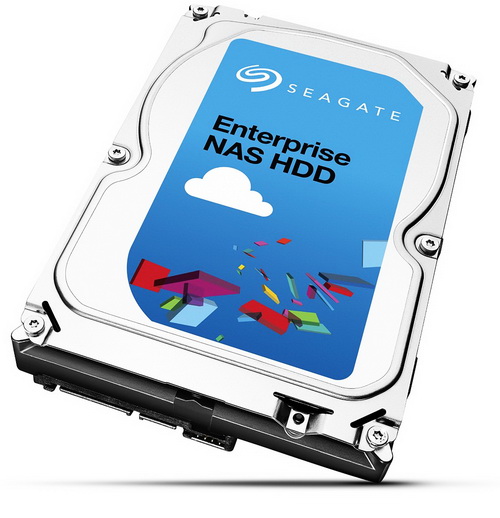INTRODUCTION
It's no secret that there are several storage choices out there for use with a desktop PC (or even a laptop) from the all-time classic regular mechanical drives up to the new solid state hybrid drives (HDD+SSD combo) and solid state drives. Things however become quite more complicated when looking for a NAS (Network Attached Storage) oriented model since there are many things one has to pay attention at aside performance and reliability such as power consumption, temperatures and even noise levels. Of course that's also why all the players in the market have launched their very own "solutions" for NAS users but much like everything else in the PC industry not all are created equal. With us today we have what is perhaps the most promising mechanical hard drive in the market today developed primarily for use with NAS servers, the Enterprise NAS HDD 6TB by Seagate.
Founded in 1979, Seagate is the leading provider of hard drives and storage solutions. From the videos, music and documents we share with friends and family on social networks, to servers that form the backbone of enterprise data centers and cloud-based computing, to desktop and notebook computers that fuel our personal productivity, Seagate products help more people store, share and protect their valuable digital content. Seagate offers the industry’s broadest portfolio of hard disk drives, solid-state drives and solid-state hybrid drives. In addition, the company offers an extensive line of retail storage products for consumers and small businesses, along with data-recovery services for any brand of hard drive and digital media type. Seagate employs more than 50,000 people around the world.
As many of you know to address the issues of power consumption, interior temperatures and noise levels manufacturers choose the easy way out and reduce the RPM of the drive from the "typical" 7200 most consumer desktop drives use down to 5900 and sometimes even 5400. Of course as expected this solution does work but at the same time this hinders the performance of the drive so although for home use a NAS doesn't require the best possible performance when we move to enterprise environments (and even small business ones) performance does matter. With that in mind Seagate chose the "hard" path so the Enterprise NAS HDD spins at 7200RPM, wears a total of 128MB onboard cache and features cutting edge technologies like AcuTrack and PowerBalance in order to increase reliability resulting to a very good MTBF (Mean Time Between Failures) of 1.2 million hours (most other NAS drives have 1). How all these translate in real use well isn’t that what we're here for?

 O-Sense
O-Sense








.png)

